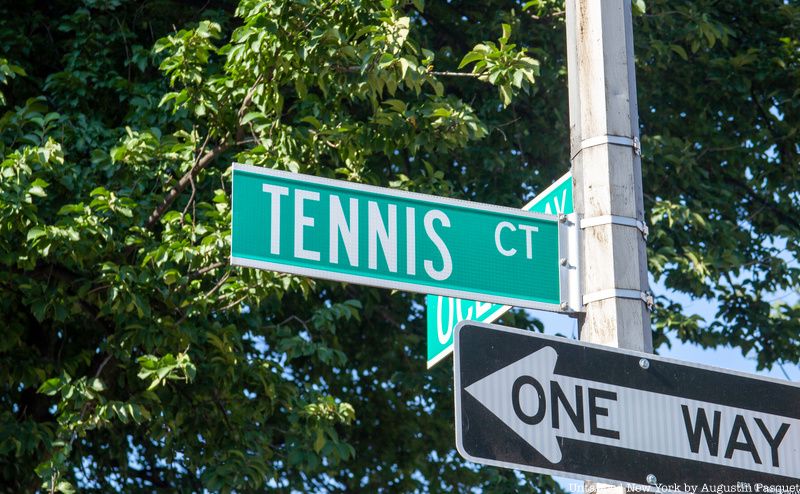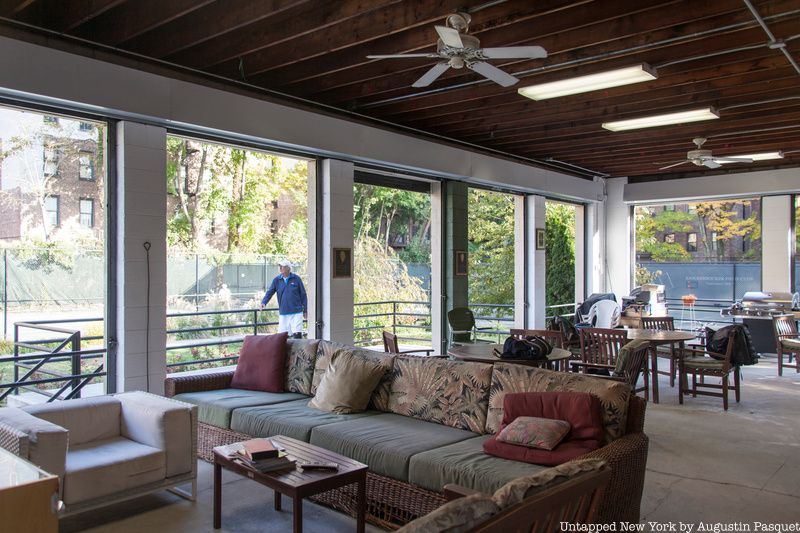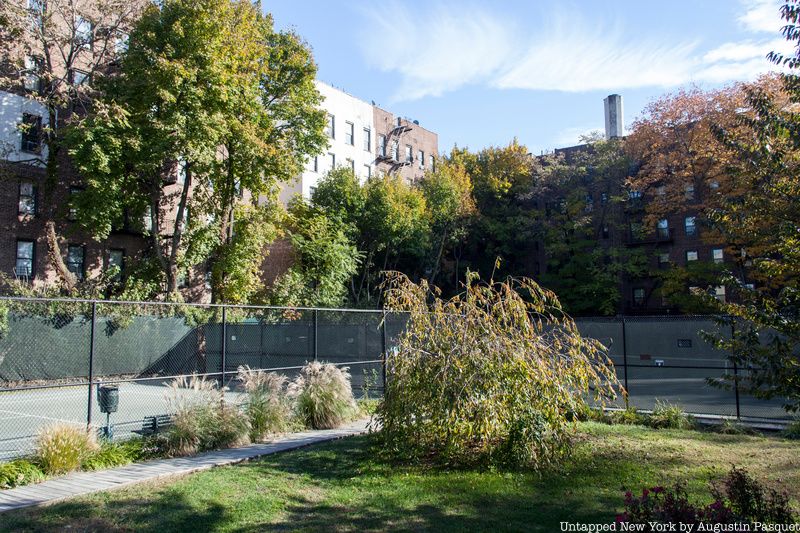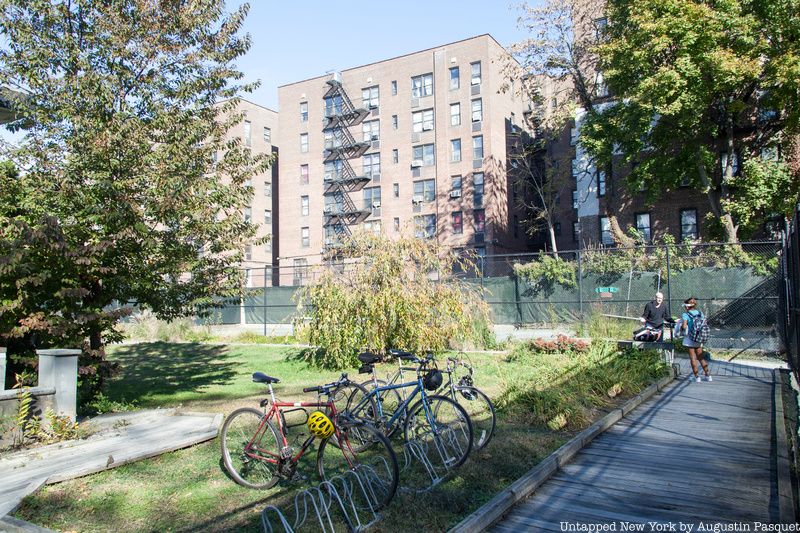Last Chance to Catch NYC's Holiday Notalgia Train
We met the voices of the NYC subway on our nostalgia ride this weekend!


The Knickerbocker Field Club is a true hidden gem, and one of our favorite locations in our book Secret Brooklyn. South of Prospect Park off of Ocean Avenue is a short, two-block street with a “punny” name: Tennis Court. Most people who pass by probably chuckle and move on, if that. But Tennis Court was originally part of a larger development, much like Prospect Park South and Flatbush-Ditmas Park nearby, with Victorian-style detached homes set amidst lawns and gardens.

But the secret gem of Tennis Court lies just across 18th Street: an actual historic tennis club hidden behind a series of seven-story apartment buildings. Still, nothing celebratory denotes the existence of the club along the street, beyond a small green sign atop a roll-down gate entrance. But walk through the parking lot and make a left, and you’ll discover five original clay courts in pristine condition that date to the founding of the club in 1889. The Knickerbocker Field Club, nicknamed “The Knick,” was part of a land lease from Ronald Ficken, a developer who pioneered the real-estate development in the Flatbush area in the mid-1880s. The secret tennis club is the only remnant of the Tennis Court development, which originally spanned several square blocks.

The Knickerbocker Field Club was wildly successful from its inception, attracting prominent Brooklyn families as members with many women from the beginning. Today, there are around 170 members with over 100 people on the waitlist. According to the club officers, it takes up to ten years to get a membership. The membership is $900 per season. Although most members are from the surrounding Brooklyn area, there are members from Manhattan and Queens (and Staten Island in the past).

On a visit, when asked why people come from a distance to play here, one of the members impromptu called out “Because it’s the best!” Another member, Beth Moorsmith, says, “It’s partly the history, because this place has been around for so long. And it’s partly that it’s so New York.” Her husband Reid adds, “There are no fancy pretensions. People like to play tennis. Despite the fact that it’s surrounded by brick buildings and a subway, it feels like an oasis.”

A Colonial Revival-style wood clapboard clubhouse, built in 1892, once stood where the current smaller clubhouse now stands. The building, designed by Partfitt Brothers, a respected Brooklyn-based architectural firm, was landmarked by New York City in 1978, when it was the only building from the Tennis Court development still standing.
The Victorian-era clubhouse had a gambrel-style roof and a porch that extended all the way to Court 4. In addition, it had a bowling alley, a swimming pool, rooms for billiards, an auditorium, and all the necessary amenities for a sports clubhouse, and even hosted plays and musicals.

The clubhouse was severely damaged in a 1988 arson fire, and despite landmark status, was approved for demolition due to financial hardship. Despite this setback, the Knickerbocker Field Club continued to thrive. The Har-Tru clay courts see active use, with the club open five days a week. Famous tennis players and pros come to give clinics on occasion and there is a free junior program every summer for six weeks. “The best thing about the club besides the tennis courts [is] the people,” says Raymond C. Habib, the President of the Knickerbocker Field Club, “It’s the members that keep people here.” On a visit, the sense of community and camaraderie is clear. Just don’t expect to be part of the club anytime soon.
The Knickerbocker Field Club is one of the 150+ locations inside our book Secret Brooklyn. Get your autographed copy below (with free shipping using code BROOKLYN)
Subscribe to our newsletter